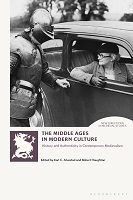The Digital Logic of Death
Confronting Mortality in Contemporary Media
Author(s)
Pustay, Steven
Collection
Knowledge Unlatched (KU)Number
105688Language
EnglishAbstract
In The Digital Logic of Death, Steven Pustay skillfully makes visible the immensely important but often overlooked role that moving images play in shaping our understanding of mortality. This relationship, he argues, is made all the more urgent by the technologies of the digital age, which have profoundly altered our ability to represent and contemplate death through moving images, resulting in an entirely new cultural logic of death. To draw out this new logic, Pustay presents accessible readings of otherwise dense and difficult philosophical approaches to death – such as those found in existentialism, psychoanalysis, and critical theory – by reading them through the lens of contemporary media. From art-house films like Irréversible and The Fountain to blockbusters like the Matrix trilogy, from television commercials for M&M's to pay-cable dramas like The Sopranos and Breaking Bad, from first-person shooters like Bioshock to indie-games like LIMBO, Pustay shows how moving images have shifted our understanding of death in general and our recognition of our own finiteness in particular.
Keywords
Social Science; Media Studies; Social Science; Death & Dying; Performing Arts; Film; History & CriticismDOI
10.5040/9781501364051ISBN
9781501364082, 9781501364068, 9781501364068, 9781501364075Publisher
Bloomsbury AcademicPublisher website
https://www.bloomsbury.com/academic/Publication date and place
2021Grantor
Imprint
Bloomsbury AcademicClassification
Media studies
Sociology: death and dying
Film history, theory or criticism


 Download
Download Download
Download